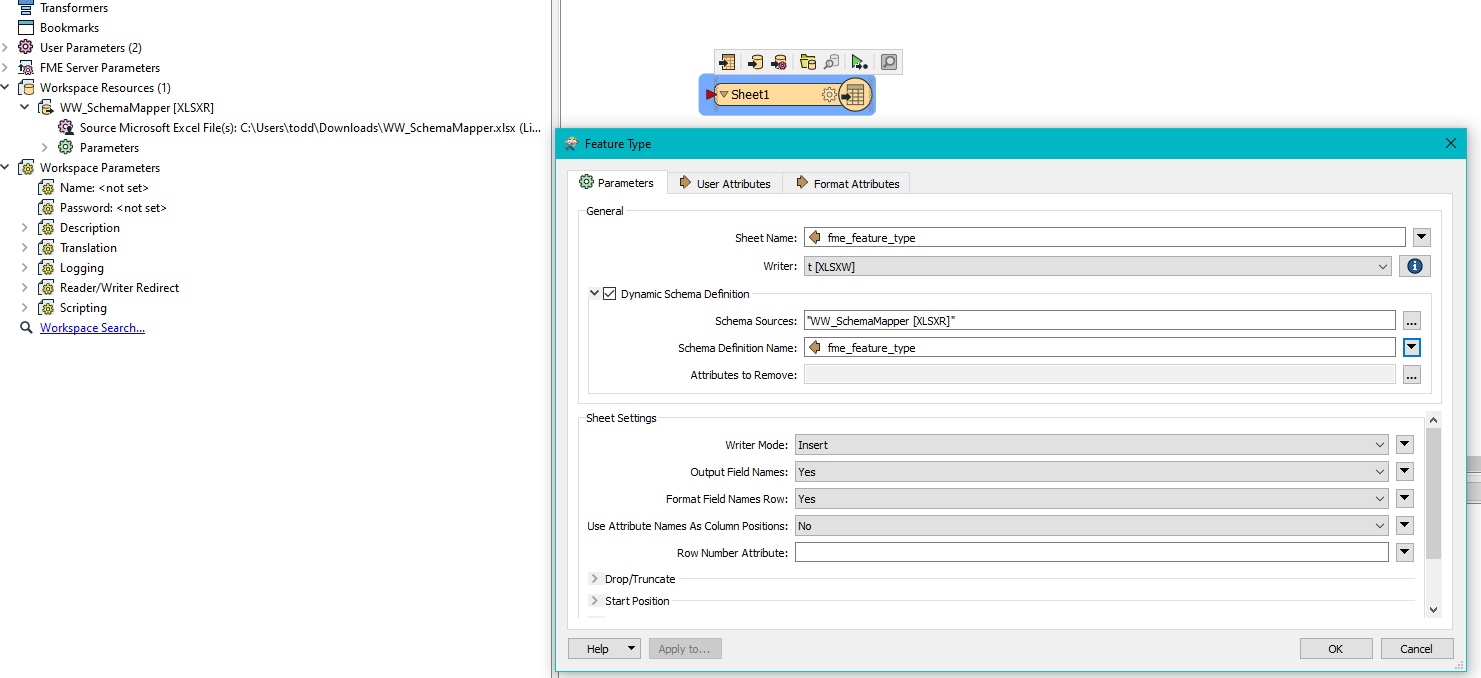Though both the schemamapper and a pythoncaller can accomplish to create, map and 'remove' attributes, the newly mapped attributes are hidden and the removed attributes are still exposed (with only missing values). When I write this to excel I get empty columns but the columns are still created. I don't want to use the hide attributes option in the pythoncaller; I want the attributes to be written and not written to be dependent on a list I read from another file.
Best answer by todd_davis
View original






